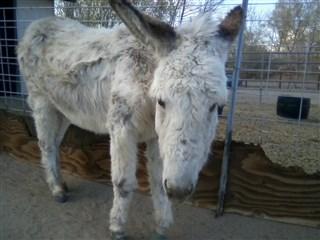|
Genetics | |||||||||||||||
|
Some people used to call Pumpkin a mule. I corrected them, and next time they asked me again: "How is your mule?". This was way too much for me. Mules may look similar to donkeys at first look, with longer ears than a horse has, but it's not so difficult to tell them apart. Therefore, I decided to create this page: A little lesson in genetics where everything depends on chromosomes... A mule is an equine hybrid that is produced by mating of a male donkey (jack) with a female horse (mare). If the father is a horse (stallion) and mother a donkey (jennet), the foal is called a hinny. Hinnies are quite rare. It is much more difficult to breed hinnies - the fertility drops when the chromosome number is lower in female. The male donkey has 62 chromosomes, the female horse 64, and this is a viable, easy cross resulting in a mule. In the reciprocal cross, the horse male (64 ch) to female donkey (62 ch), the female count is lower and the conception rate, as well as the live birth ratio, drops drastically. That's why the hinny is so rare. Mules and hinnies can't reproduce on their own. They are sterile because they can't make sperms or eggs. The reason is that their chromosomes don't match up well. The number of chromosomes plays a very important role. A mule gets 1/2 of horse chromosomes (32) and 1/2 of donkey chromosomes (31) for a total of 63 chromosomes. Odd number of chromosomes causes always in mammals reproductive trouble because, in a process called meiosis, chromosomes need to match up after making copies of themselves in a very particular way which can't happen in a mule or hinny. They are sterile because horse's and donkey's chromosomes are too different. On the other hand, mules and hinnies can exist because horse's and donkey's chromosomes are similar enough to mate.

| ||||||||||||||
 |
